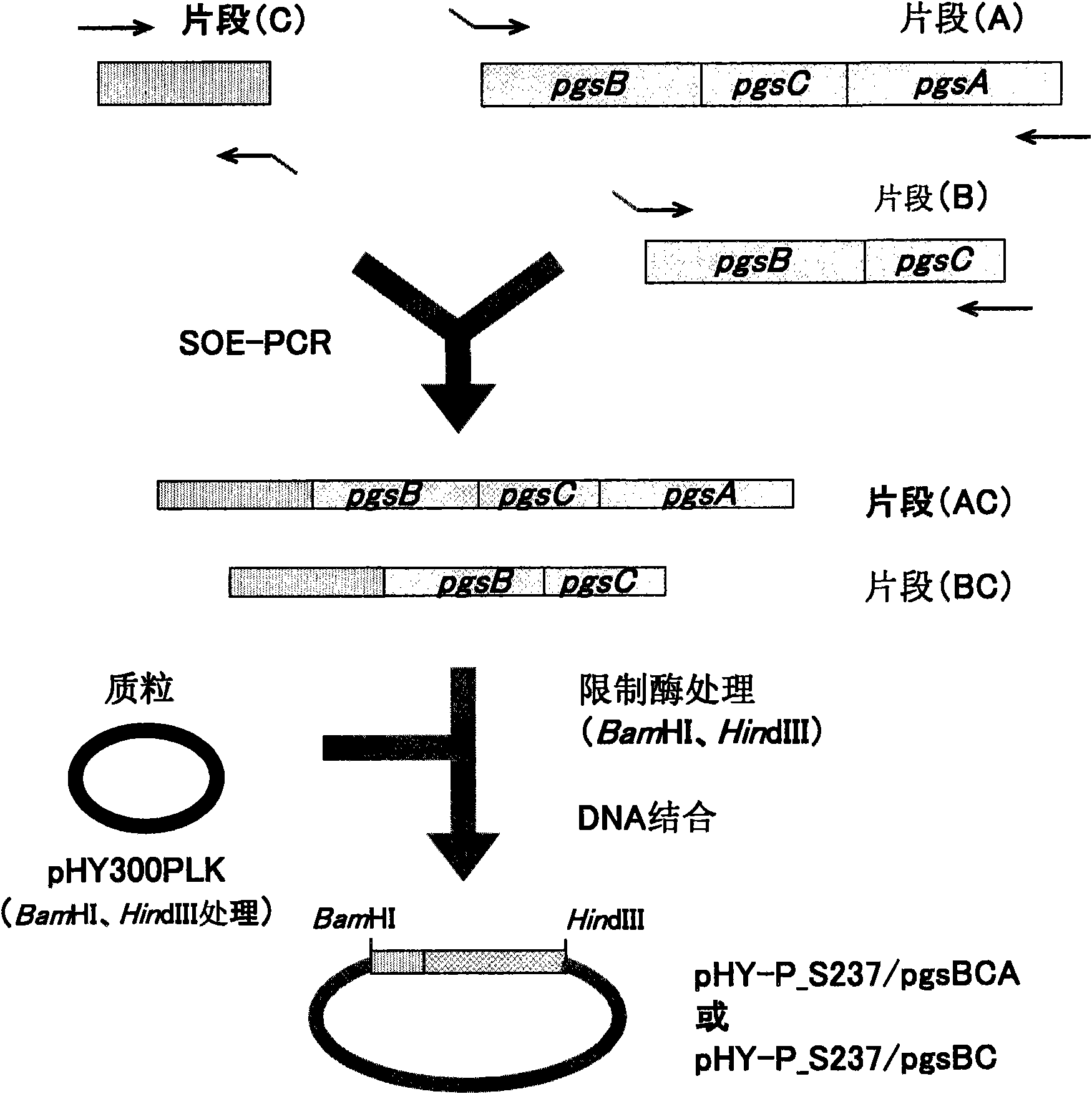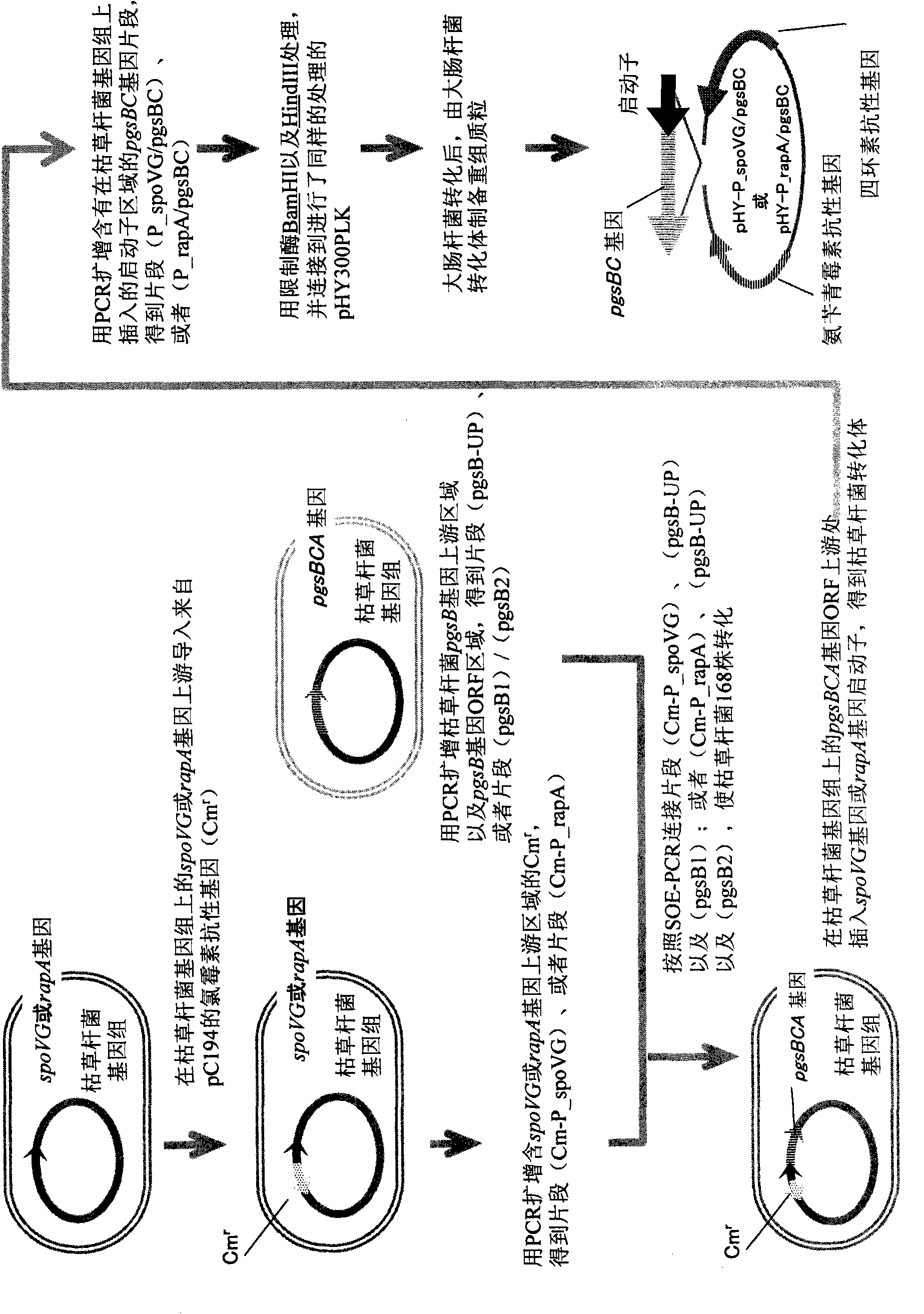Recombinant microorganism and method for producing poly-gamma-glutamic acid
A technology of recombinant microorganisms and glutamic acid, which is applied in the direction of recombinant DNA technology, introduction of foreign genetic material using vectors, ligase, etc., can solve problems such as inability to efficiently produce PGA
- Summary
- Abstract
- Description
- Claims
- Application Information
AI Technical Summary
Problems solved by technology
Method used
Image
Examples
Embodiment
[0094] Hereinafter, the present invention will be described in further detail using examples, but the technical scope of the present invention is not limited to the following examples. Table 1 shows the names of the primers used in this example, their sequences, and their serial numbers. In addition, in the nucleotide sequences shown in Table 1, the underlined part indicates the added restriction enzyme recognition sequence.
[0095] Table 1
[0096] Primer
[0097] Primer
manufacture example 1
[0098] [Manufacturing example 1] Construction of carrier (1)
[0099] This production example shows the cloning method of the gene group involved in PGA synthesis (refer to figure 1 ).
[0100] First, the Bacillus The chromosomal DNA prepared by sp.KSM-366 strain (FERM BP-6262) was used as a template, and the primer pair of pgsB-F (sequence number 12) and pgsA-R (sequence number 13) shown in Table 1 was used to prepare pgsBCA A 2.9 kb DNA fragment of the gene (A). Additionally, serial number 47 indicates Bacillus sp.KSM-366 strain pGS The base sequence of the gene, the sequence number 48 indicates the above pGS The amino acid sequence of the protein encoded by the gene, represented by SEQ ID NO: 49 pGS The base sequence of the gene, the sequence number 50 indicates the above pGS The amino acid sequence of the protein encoded by the gene, represented by SEQ ID NO: 51 pGS The base sequence of the gene, the sequence number 52 indicates the above pGS The amino a...
manufacture example 2
[0104] [Manufacturing example 2] Construction of carrier (2)
[0105] This production example shows the cloning method of the gene group involved in PGA synthesis (refer to image 3 ).
[0106] First, the Bacillus subtilis The chromosomal DNA prepared by Marburg No.168 strain (Bacillus subtilis strain 168) was used as a template, and the primer pair of P_spoVG FW2 (SEQ ID NO: 24) and P_spoVG / CmR (SEQ ID NO: 25) shown in Table 1 was used to prepare the upstream side 0.9 kb DNA fragment (spoVG-UP) for use in spoVG The chloramphenicol resistance gene ( cm r ). Similarly, using the primer pair of P_spoVG / Cm F and (SEQ ID NO: 26) P_spoVG RV (SEQ ID NO: 27) shown in Table 1, a DNA fragment (spoVG-DW) of 0.6 kb on the downstream side was prepared (primers for P_spoVG RV at this time is designed to be spoVG The start codon gtg of the gene ORF was changed to atg). In addition, using plasmid pC194 as a template, a 0.9 kb DNA fragment (comp_Cm) of the chloramphenicol resistanc...
PUM
| Property | Measurement | Unit |
|---|---|---|
| optical purity | aaaaa | aaaaa |
Abstract
Description
Claims
Application Information
 Login to View More
Login to View More - R&D
- Intellectual Property
- Life Sciences
- Materials
- Tech Scout
- Unparalleled Data Quality
- Higher Quality Content
- 60% Fewer Hallucinations
Browse by: Latest US Patents, China's latest patents, Technical Efficacy Thesaurus, Application Domain, Technology Topic, Popular Technical Reports.
© 2025 PatSnap. All rights reserved.Legal|Privacy policy|Modern Slavery Act Transparency Statement|Sitemap|About US| Contact US: help@patsnap.com



